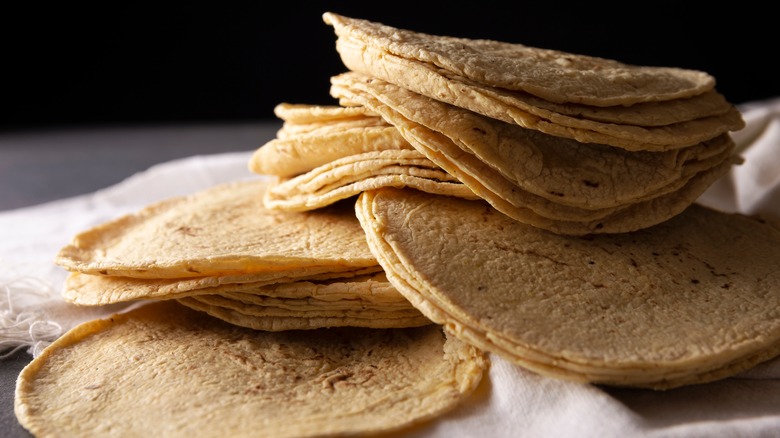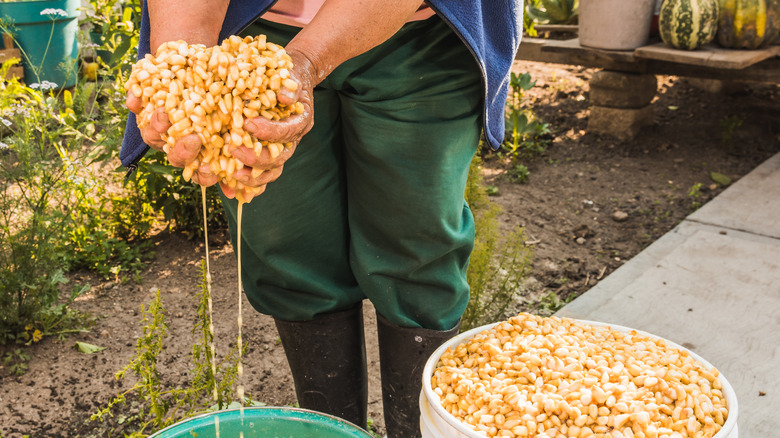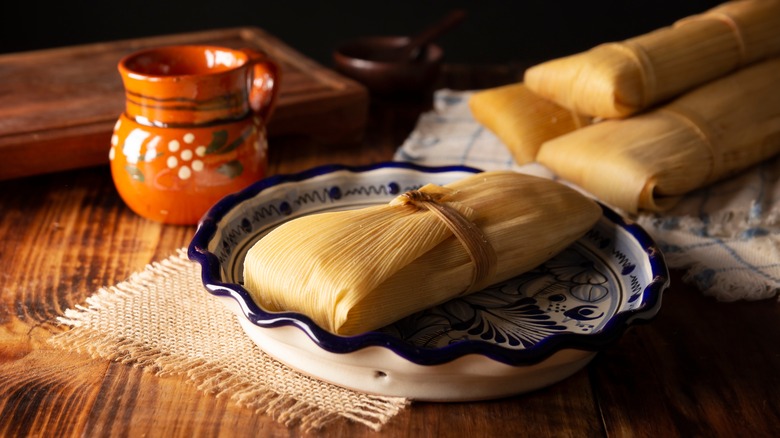What Is Nixtamalization And Why Is It So Important?
While you may only know masa harina as the corn flour that you use to thicken your chili, it might actually be one of the most important culinary creations ever. The invention of masa harina flour helped not only to feed the earliest mesoamerican civilizations but evolved into much of the modern Mexican and Central American cuisine we know today. Corn tortillas, pupusas, tamales, and sopes all owe their existence to the creation of masa harina flour.
Behind masa harina flour — or masa if you're talking about the dough — is a unique process that is practically magic for all the good that it does. The name for it is nixtamalization, and it is a cooking process wherein the vegetable is cooked in a chemical solution and then processed to create nixtamalized corn flour. Not only does it make the corn kernels themselves easier to handle, but it also unlocks the grain's nutritional potential. Without this process, it's likely that corn wouldn't be the staple food that it is today.
What is nixtamalization?
Nixtamalization is a very simple process, but it causes a complex chemical reaction in corn kernels. The main step is that the corn is cooked in an alkaline liquid solution. Alkaline means that it has a ph balance higher than 7 which means that it is considered non-acidic. In the case of nixtamalization, this is most often accomplished by adding food-grade lime to water. The corn is then added to this solution, boiled, allowed to steep, and then drained.
One benefit of this process is that it makes it easier to remove the kernel's tough outer hull which is known as a pericarp. From there, the corn is allowed to dry and is then ground into the same flour used to make tortillas.
Besides gelatinizing the corn's starches to improve its flexibility, this process also releases much of the corn's nutritional value. Among other things, this process makes calcium, iron, and dietary fibers more readily available to the human body. A nutrient called niacin is also released by nixtamalization and is an important vitamin that helps convert food into energy, per the Harvard T.H. Chan School of Public Health. It also helps battle a wasting disease called pellagra, according to Masienda. This additional nutrition helped growing populations feed their people with an abundant, delicious, and versatile food source.
A brief history of nixtamalization
Anthropologist Tanya M. Peres, writing for Gravy, says that corn was first domesticated more than 9,000 years ago. In the Rio Balas region of modern-day Mexico, the first human beings began cultivating corn as a dependable crop. 6,000 years later, the Aztec civilization would arise and would discover the nixtamalization process. The story goes that the Aztecs discovered that the ashes from cooking fires could be added to water to create an alkaline solution. This sped up food preparation because corn cooked in this solution more easily shed its outer hull in order to create masa.
The name nixtamalization even comes from this discovery. In the Aztec language Nahuatl, "nextli" means ashes, and "tamali" means dough made from corn.
Peres continues to explain that when European colonizers brought corn back to Europe with them they failed to bring this process along with them. This led to the discovery of pellagra in 1735. It was discovered that this disease was brought on by the absence of the valuable niacin that is unlocked by nixtamalization. When a device was also introduced to the U.S. market in the early 20th century to remove the corn's germ and speed up processing, it also let loose an unexpected wave of pellagra as even more of the niacin content was removed.


